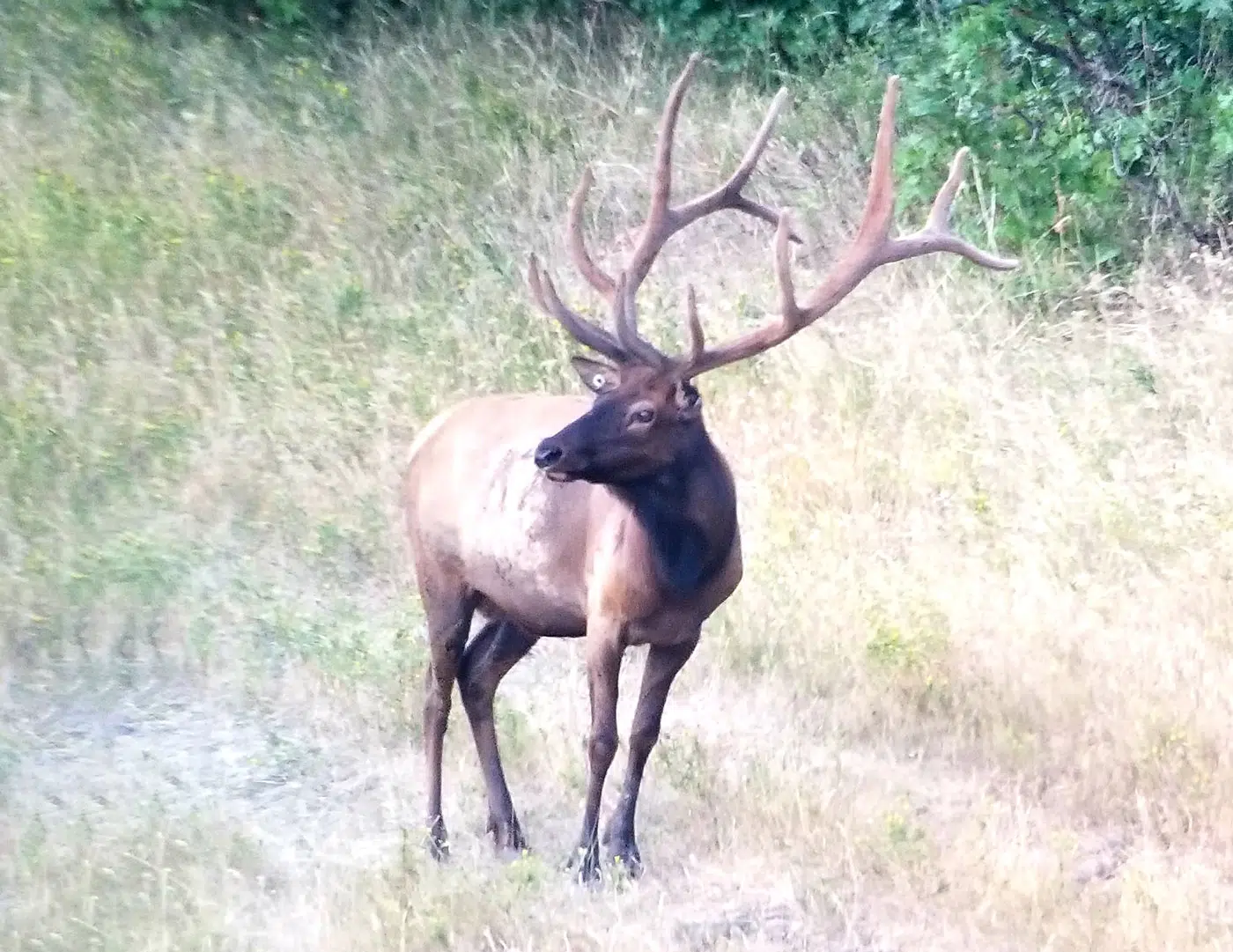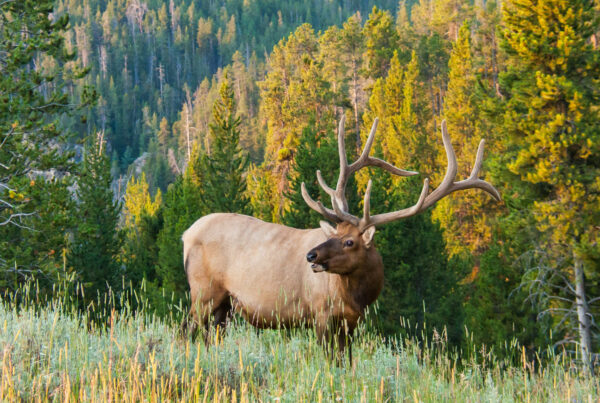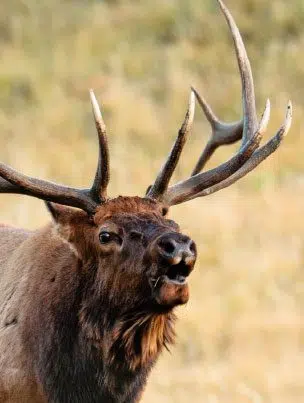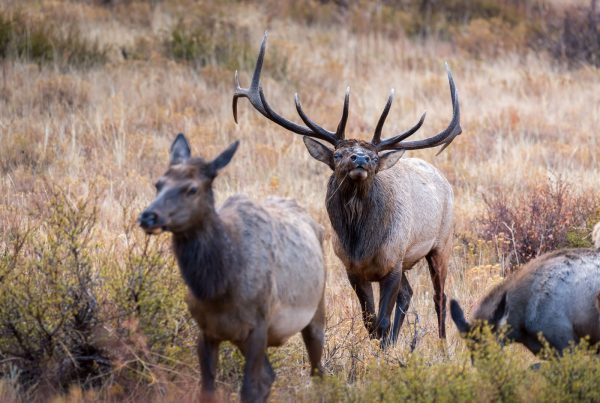Taking down a trophy elk can be the thrill of a lifetime. On the flip side, the story of the one that got away can haunt you forever. Shot placement is often the difference between a successful hunt and a disappointing one.
Whether you’re on a guided elk hunt or hunting independently, with a rifle or a bow, understanding an elk’s anatomy and where to hit it will help more of your shots be kill shots.
This guide will help you visualize the vital zones in the elk anatomy and where to aim with a rifle or a bow to increase the chances of a quick kill.
WHAT’S THE BEST SHOT PLACEMENT ON A TROPHY ELK FOR A QUICK KILL?
When hunting big game, like elk, you want to bring them down quickly. A wounding shot can result in hours, if not days, of following the long blood trail of a slowly dying animal. But a kill shot can have you on the phone with your taxidermists making arrangements to stuff your trophy by the end of the day.
To kill big game quickly, you need to target their vital organs, namely the lungs and heart. A shot that pierces the lungs or heart with a bullet or arrow is the quickest way to bring down an elk.
In most big game, the lungs and heart are positioned closely together inside the body. They create a prime target area called the vital zone. Aiming for the vital zone when hunting big game will result in more kills, more successful hunts, and more trophies.
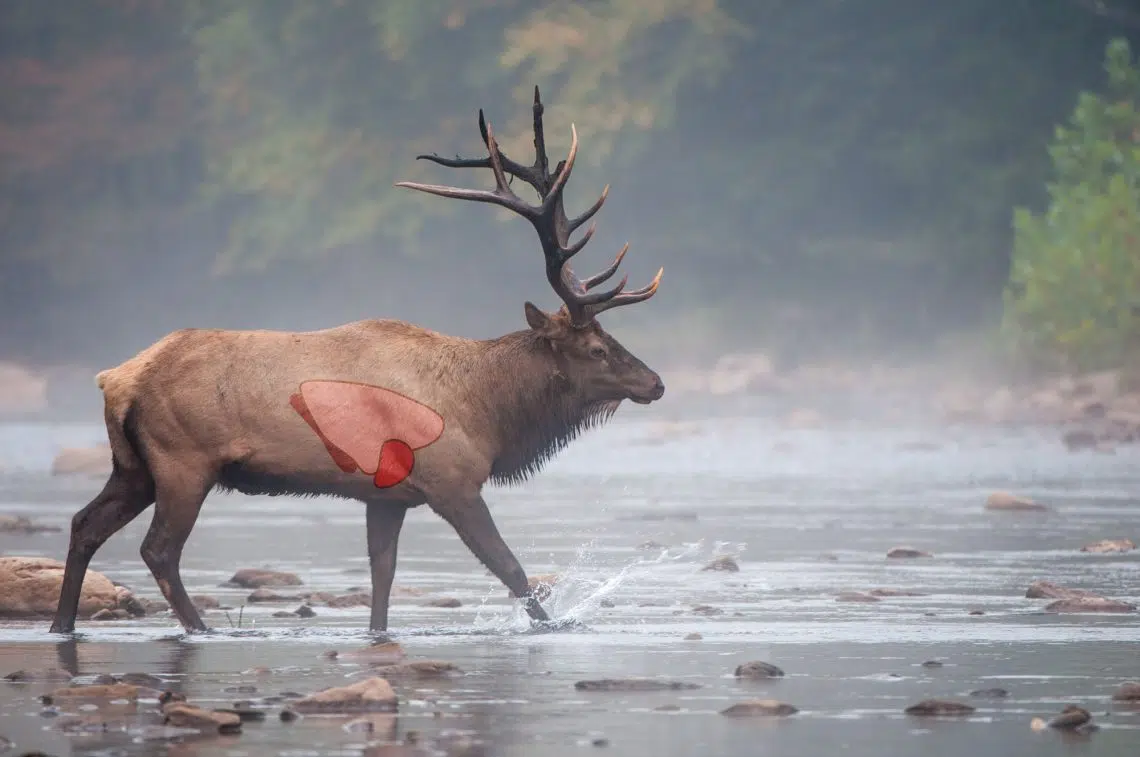
How big is the elk vital zone?
An animal’s vital zone, or kill zone, is the area within the animal’s body that houses a large group of the animal’s vital organs. Shooting a big game animal in the kill zone will improve a hunter’s chance of hitting one of the animal’s vital organs and successfully killing it. Essentially, when hunting big game, make the kill zone your target.
The size of the vital zone will vary depending on the animal’s size. For elk, the kill zone ranges from about 24 to 26 inches. That’s the total area when the elk is standing broadside. If the elk is quartering away, you may not have the entire vital zone visible from your perspective.
What is the best shot placement for an elk?
Your shot placement often determines if you get a kill on your hunt. Understand the difference between a good shot and a challenging shot.
On an elk, you should place your shot in the bottom third of the animal’s torso, an inch or two behind the front shoulder. This will give you the best chance of penetrating the elk’s heart or lungs with your shot.
A well-placed shot can bring a big game animal down more often and more quickly than a grazing shot. Not only does a good shot make the kill easier, but because the animal dies more quickly, it makes finding the carcass easier as well. However, aiming a shot and placing a shot are slightly different things.
Where do you aim on an elk?
Now that you know where to hit your trophy elk let’s go over how you shoot it there.
Save your shot for when you have a good angle. The best shots are when the animal stands broadside or is quartering away from you. These two angles will give you the best shot at the target zone.
Don’t shoot too high. The vital organs of an elk ride lower in their body than it might seem when looking at it from the outside. Aim for the lower third of the animal, not the middle. High shots tend to injure an animal and scare it off without killing it. Or, the animal could bleed out slowly over the next few days and lead you all over the mountain.
An elk’s heart and lungs are in the front half of the body. Aim an inch or two behind the animal’s front shoulder to give yourself the best chance to hit the kill zone.
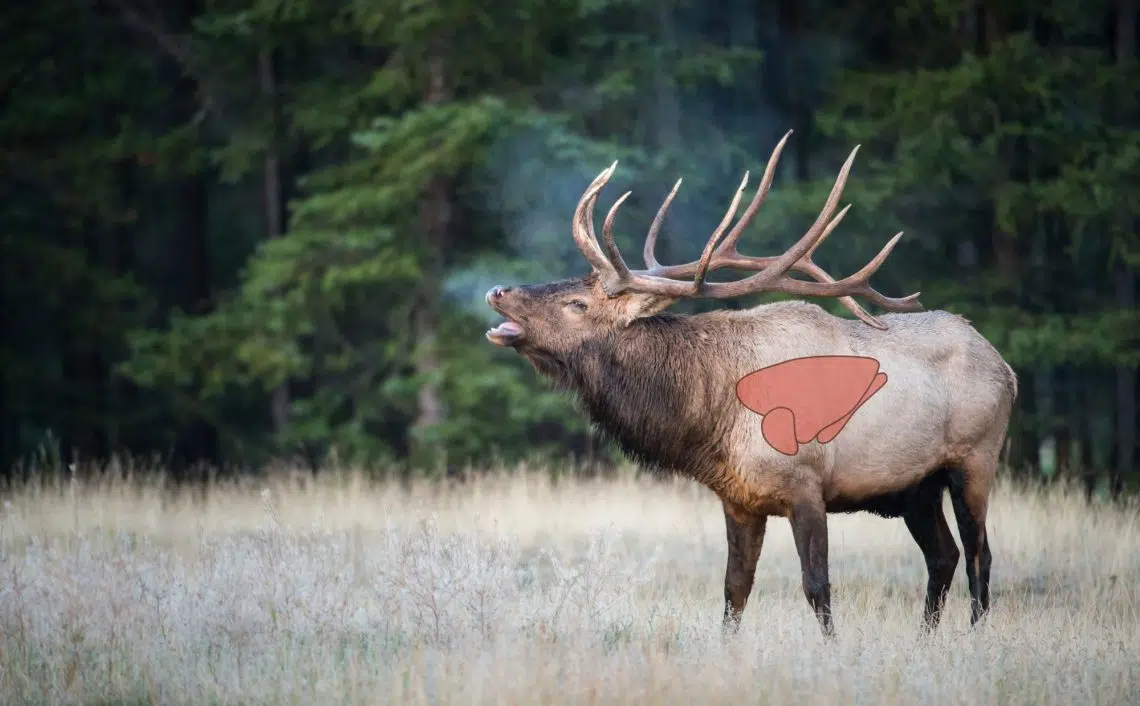
Adjust your aim to accommodate your angle. Placing a shot in the vital zone is pretty straightforward when shooting at the animal broadside from ground level. It gets a bit more complicated with harsher angles. Remember, the animal’s body has depth, and you can and should account for that when adjusting your aim for your angle.
Aim higher on the animal when shooting down from a high angle, like you would in a tree blind. The shot’s trajectory should place it in the animal’s vital zone as it reaches the lower third of the body. Likewise, when shooting from slightly behind the animal as it’s quartering away from you, aim a little further back.
Adjusting your aim to hit the vital zone of the animal will improve your kill shot ratio.
What To Do After Shooting an Elk
Remember, shooting the elk is just the beginning. After shooting the elk, you still need to track it down to ensure the kill and find the carcass. Then you must drag it out of the forest and get it processed. Whether you’re taking it to the butcher or the taxidermist, the real work comes after you shoot the animal.
While some hunters take pride in packing out their own kills, you don’t have to be stuck with all that hard work after the thrill of the chase has already passed. When you book a guided hunt, like the premium elk hunting packages you can get at West Canyon Ranch, we take care of transporting your kill for you. They can even arrange for the processing and transportation of the meat.
EXPERIENCE ELK HUNTING AT ITS FINEST AT WEST CANYON RANCH
West Canyon Ranch offers a guided hunting experience unlike any other. It pairs you with a guide to help you target the best shot placement. They’ll also guide you through your hunt across our hundreds of acres of pristine mountain wilderness.
The guided hunting at West Canyon Ranch ensures a quick kill and a satisfying and dignified bonding experience for you and the elk. Contact West Canyon Ranch about your next elk hunt. Our guided packages could be a life-changing experience.


